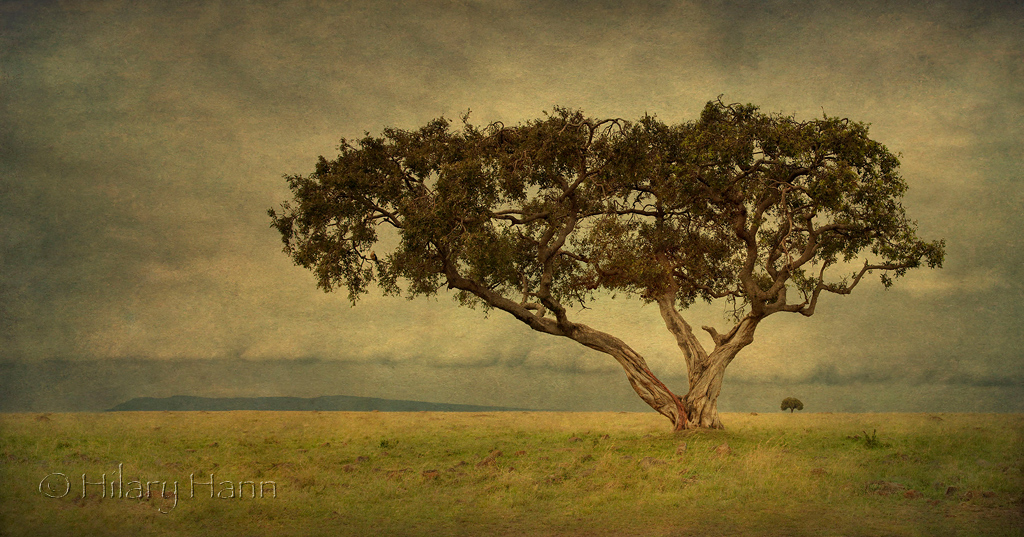In 2010 I spent a week in the Mara with a guide and driver,
photographing to my time schedule and interests and not having to concern
myself with anyone else’s.
Everyone should try it, cathartic.
During that short week, I took the photos which ended up winning me my
first South Australian Landscape Photographer of the Year, with three of the
images comprising trees.
When I returned in 2011 I reunited with my same guide and driver from the previous year and showed them the photos which had done so well for me. From that moment on, Daniel went to great pains to find interesting trees for my collection. Some were trees which were a little out of the way, certainly most were ones we wouldn’t have normally noticed if they weren’t perched above some predatory action.
We did particularly well out of that year’s trees.
One in particular became a favourite of mine and it won a Gold at the State awards and a Silver Distinction at the Australian Professional Photographic Awards.
Two Trees
Two years after first photographing the tree I returned earlier this year and we were reunited. It was early morning and we had left camp to make a fairly long drive to a particular area we wanted to explore. As we rounded a corner I looked at a large fig tree which had just a hint of morning colour behind it. It looked vaguely familiar and my son, who was with me but who had been in the Mara for the previous five weeks and had recognized it earlier, said “Mum, that’s your tree!”. At first I wasn’t sure, something was different and then I realised what it was. The Euphorbia which sat in the background in my photo giving depth and dimension had gone, just a few stray branches sticking up into the air in a sad, desolate manner. I felt unaccountably emotional, it was after all, just another tree but it was part of my landscape which had served me well and now that landscape had changed forever. I wonder why we sometimes feel that landscapes are static.
Two years later
I took another photo of the scene and although I didn’t line up the same angle or point of view, the dead tree is clearly visible. As we sat there, I was told about some action which involved the tree only a few months previously. Some visitors were self driving and saw a pride of lions sitting in the branches of the tree. (Why couldn’t they have been there for me, that surely would have sent the print Gold at APPAs!!) Deciding to investigate further and instead of parking a short distance away and watching from there, they drove right under the spreading branches of the tree so they could get the closest possible view, thereby breaking one of the golden rules of not invading the wildlife’s space. A short time later they went to start the vehicle and continue their explorations only to find that the engine was dead. What to do? Radioing back to camp they explained their sorry plight, unable to get out of the vehicle to look under the bonnet … unable to get out of the vehicle for any reason for that matter. The camp manager was understandably unsympathetic. These were not novice tourists with a guide but locals who should have known better so he didn’t hurry to their rescue, letting them sit there a while learning their lesson.
I bet there would be many, many tales of adventure and excitement that the magnificent fig tree could tell if only we could understand its soughing branches and whispering leaves.


